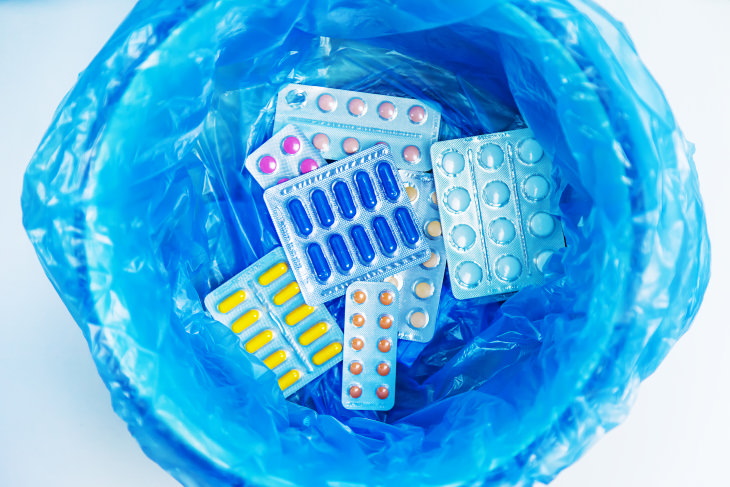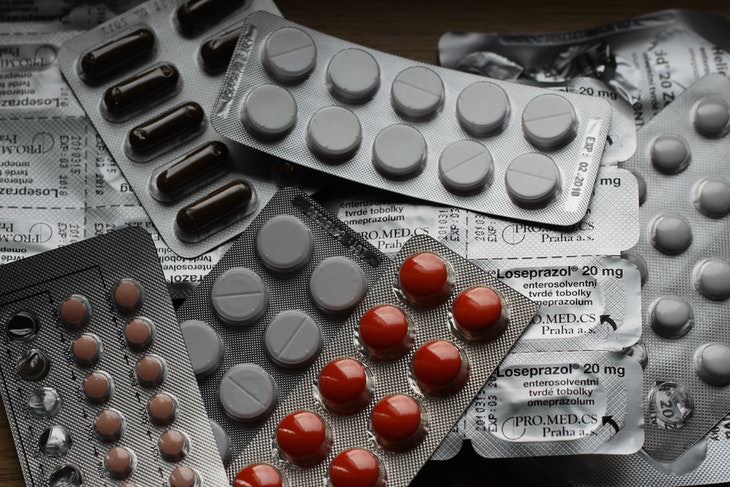
Getting rid of unused OTC and prescription medication is important for your own safety, as well as the safety of others.
You may have a few bottles of the same medication lying around. If you’re taking several types of medications, it’s easy to get confused and take the wrong one. You may also end up reaching for an old or possibly expired bottle by accident, which can be dangerous. Not only are old or expired medications less potent and effective than fresh ones, but they may also be dangerous to ingest.
It’s useful to go through all of your prescriptions with your doctor from time to time and make sure that you’re not taking anything extra. Of course, you can prevent this from happening in the first place, if you get in the habit of disposing of old prescriptions on time.

Keeping old medication may also pose a hazard to others. Kids, pets, or even other adults in your household may take the wrong medication by mistake.
In addition, improperly stored or discarded medication can end up in the wrong hands. According to a spokesperson for the U.S. Drug Enforcement Administration (DEA) who spoke to Healthline, “What people fail to realize, or may not even know, is that a majority of abused prescription drugs are obtained from family and friends.” Such medications as fentanyl patches or other pain medications may end up abused or sold to others, even if they are expired or thrown away in the trash. So, it’s very important to discard these potentially dangerous meds properly.
Lastly, storing old medication is usually simply unnecessary. Even seemingly useful medication like leftover antibiotics should not be kept at home. Antibiotics usually target specific bacterial infections and should be taken for several days for you to see any effect. Therefore, keeping one or two leftover pills is kind of pointless.

The safest way to get rid of unused or expired medication, both OTC and prescription, is to drop it off at a drug take-back location. Periodically, the DEA conducts a National Prescription Drug Take-Back Day, where individuals can drop off any unused or expired medication at one of the many locations in the country. The medication is incinerated in a secure facility, ensuring that any hazardous chemicals are completely destroyed.
There are more than 11,000 permanent collection sites across the US. Many local pharmacies conduct Take Back programs for safe medication disposal as well. Your pharmacist should be able to direct you to the nearest safe disposal location.
If you don’t have a safe medication drop off site near you, the FDA recommends getting rid of the medication in the following way:
1. Flushing medicines down the toilet.
Potentially dangerous medicines that are on the FDA flush list can be disposed of by emptying the bottle of medication into the toilet bowl and flushing it down the drain. Not all medications can be flushed safely, but the FDA has a flush list of medications on their website, which you can access here - FDA flush list. Don’t worry about the environmental impact of flushing medications down the drain; the FDA conducted a study accessing such risks and found that they are negligible.
2. Throwing medicines in the trash.
Non-flushable medications can be disposed of through household trash. Avoid simply throwing a bottle of prescription medication in the trash can. This is dangerous because your personal information is listed on the bottle, and could potentially be abused. So, first things first, scratch off all the personal information. It’s also advised to mix the medicine with something inedible and unpalatable, such as kitty litter, used coffee grounds, or dirt, before throwing it in the trash. This prevents the medication from being stolen or abused.
Please share this important information with others!